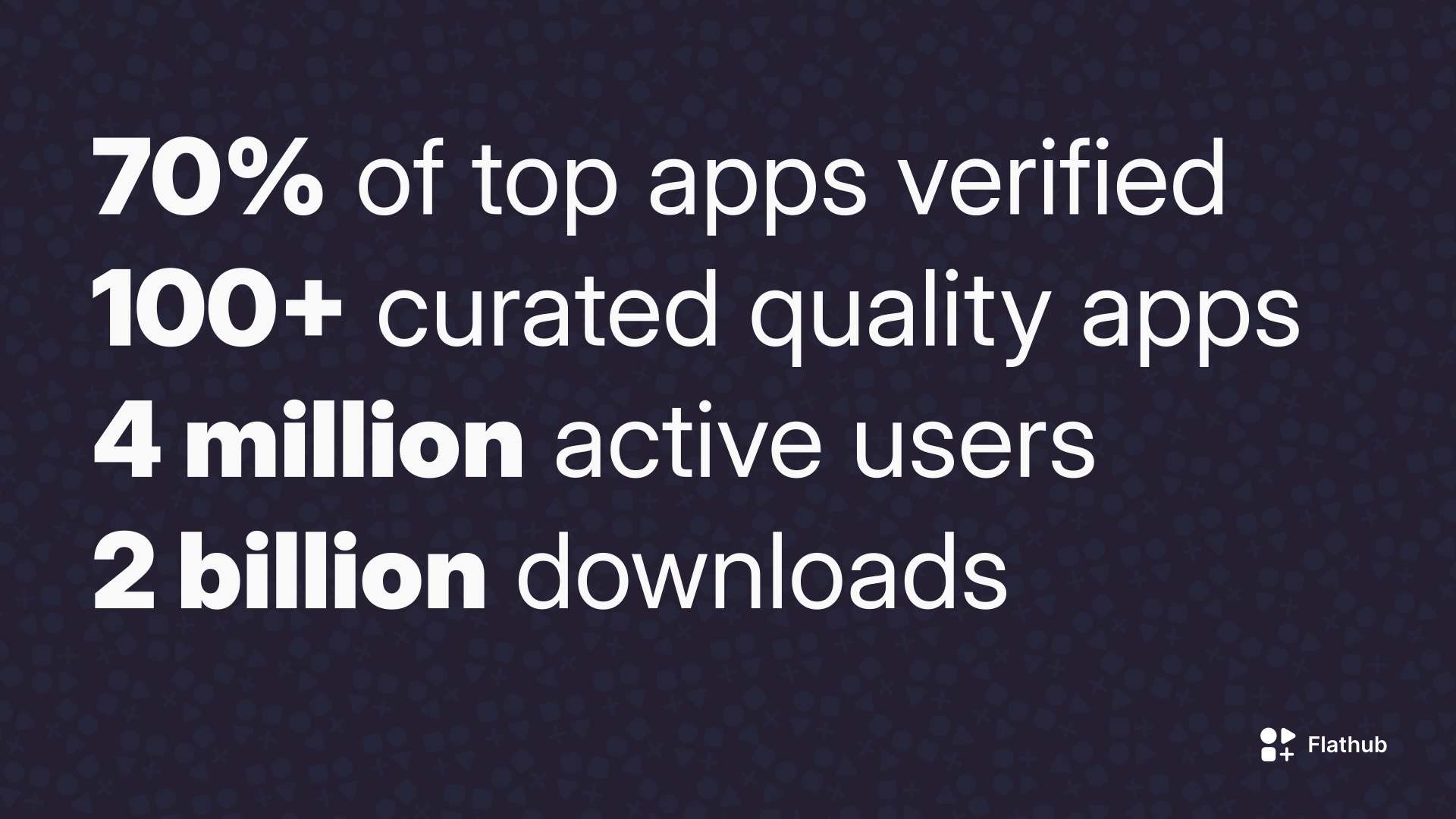- cross-posted to:
- [email protected]
- [email protected]
- cross-posted to:
- [email protected]
- [email protected]
We’re back with some new milestones thanks to the continued growth of Flathub as an app store and the incredible work of both our largely volunteer team and our growing app developer community:
- 70% of the most popular apps are verified
- 100+ curated quality apps
- 4 million active users
- Over 2 billion downloads



deleted by creator
Measures are cool, but a bunch of people would start to complain about telemetry. And opt-in telemetry in this kind of metrics is not relevant.
How does it measure weekly active users? Does it keep track of who runs the application? And how does this account for distro hoppers and QA testers?
deleted by creator
But isn’t that the same as Flatpak’s “X clients download updates”-metric?
How to they associate that with the user or the machine? Rather than the amount of snapd clients/OS’s with snapd on it? (as to not count one person with two Linuxes double, which Flatpak does)
deleted by creator